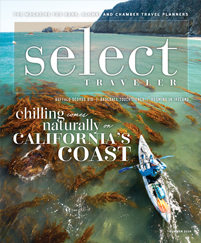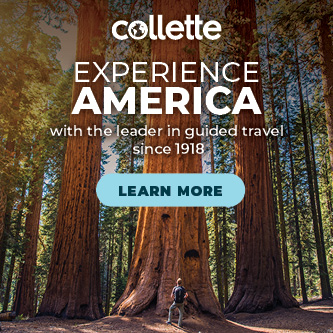A heaping plate of gumbo is a joyride for the senses.
Since smell and taste are closely tied to memories, feasting on gumbo along Louisiana’s Cajun Bayou Food Trail can also become an enduring travel memory.
Tourism offices want visitors to easily access these memorable dining experiences, which is why many states promote food and spirit trails. Groups can follow these trails to enjoy crabs in Maryland, barbecue in Alabama and cheese in Wisconsin at restaurants that use local recipes and ingredients.
Planners can ensure plenty of delicious and unforgettable meals along these six food and spirit trails.
Louisiana’s Cajun Bayou Food Trail
Love equals food in Louisiana. Here, families gather regularly to eat and share recipes passed down through the generations.
Groups can enjoy similar dishes along the Cajun Bayou Food Trail. The state’s abundant fresh seafood and cultural history created the distinctive Cajun cuisine popular especially in the “bayou” area south of New Orleans in Lafourche Parish.
Officially launched in 2018, the trail highlights restaurants and food vendors that celebrate the heritage of the area with local ingredients and a distinctive spin on the concept of Cajun cuisine.
Cajun cuisine can be adapted easily, since the culinary style draws influences from the cultures of French, African, Spanish and Native Americans who lived in the area. The resulting Cajun dishes combine various cooking seasonings and techniques with local meat and Gulf of Mexico seafood.
Groups can try gumbo with chicken, sausage, shrimp and even alligator. Some local chefs pour on the spice; others use it sparingly. Some restaurants serve gumbo with rice, and others top it with potato salad. Visitors are advised to pack stretchy pants and try it all.
Among the best restaurants for groups on the trail is Spahr’s Seafood in Des Allemands. For more than 50 years, the restaurant has specialized in local cuisine, such as catfish chips and shellfish pasta with cream sauce.
Groups can also try more casual po’boy eateries such as the Eat Fit Bayou, which offers healthier Cajun meals that still retain the region’s familiar taste. Other favorite stops include a visit to the Bourgeois Meat Market, which opened in 1891 and retains its popularity for its jerky and boudin, a Cajun version of sausage.
Maryland’s Crab and Oyster Trail
Maryland’s famous blue crab doesn’t just come steamed. Venues along Maryland’s Crab and Oyster Trail serve the regional specialty in crab cakes, omelets, pizza, quesadillas and hamburgers. In one form or another, crab dishes feature prominently on many Maryland menus.
The Chesapeake Bay’s plentiful seafood has fed the area since Maryland’s indigenous people lived there. Capt. John Smith remarked on the bay’s seafood bounty when he arrived in 1607, which influenced future immigration to the area.
Oysters now rivals crab in the region because of a flourishing oyster farming industry. Groups can dine on these delicacies while also learning about the state’s seafaring heritage. The Chesapeake Bay Maritime Museum in St. Michaels details the local fishing industry with interactive exhibits and the world’s largest collection of Chesapeake Bay boats.
At Captain James Landing in Baltimore, groups can eat in a restaurant shaped like a merchant vessel. The seafood restaurant serves up fun, steamed crabs and waterfront seating.
Another restaurant that welcomes groups is Phillip’s in Ocean City. The restaurant began as a crab shack in the late 1950s and has since grown into an international business.
Ohio’s Ice Cream Trail
Happiness comes on a waffle cone in Ohio. The state’s long love affair with ice cream is now accessible to groups on Ohio’s Ice Cream Trail.
With 2,200 dairy farms, Ohio’s obsession with the creamy dessert came about naturally. Many of the state’s ice cream parlors have also found wider success, such as the iconic Graeter’s Ice Cream chain that opened its doors in Cincinnati in 1870.
Started in 2018, Ohio’s Ice Cream Trail showcases 20 local, family-owned and nationally recognized ice cream shops across the state.
Groups can add some sweet fun to their tours by stopping at some of these shops, such as Sweet Moses in Cleveland, which offers a 10 Scoop Terminal Tower that takes several people to finish.
The Mill at Velvet Ice Cream in Utica churns out the dessert in front of guests during a factory tour. After learning about the company’s history, which goes back to its 1914 opening, participants can choose from various flavors including Velvet’s Buckeye Classic.
At Young’s Jersey Dairy in Yellow Springs, visitors can meet the cows that supply the milk for ice cream. The farm and restaurant offers a petting area for goats and cows, as well as light-hearted games of mini-golf at Udders and Putters.
Alabama’s BBQ Trail
Asking where to find the best barbecue in Alabama opens a Pandora’s box of controversy. People all over the state proudly proclaim that their county has the tastiest barbecue, and they are happy to argue with each other about it.
Why the disagreement? Travel across the state, and the barbecue flavors change.
The food is tied to the state’s identity, which inspired Alabama Tourism to launch the Year of Alabama Barbecue in 2015. The yearlong campaign included a website, a smartphone app and a documentary film that chronicled the history of Alabama barbecue. The Alabama BBQ Trail app continues to give quick access to the history and favorite dishes of more than 72 barbecue restaurants in 52 cities across the state.
The age-old art of slow-cooking meat became a way for the working class to bring flavor and tenderness to even the most inexpensive cuts of meat. Though each region of the state favors different methods, one emblematic type of Alabama barbecue is a white sauce of mayonnaise, apple cider vinegar and lemon juice.
The white sauce was initially created in Decatur, Alabama, by Robert Gibson at Big Bob Gibson’s Bar-B-Q Restaurant in 1925. Groups can visit this innovative restaurant that still wins prestigious barbecue competitions. Chef Chris Lilly, great-grandson-in-law of the original Bob Gibson, is recognized as one of the top barbecue chefs in the nation and has written several barbecue books.
Golden Rule Bar-B-Q in Irondale, Alabama, is one of the oldest restaurants in the state. Opened in 1891, the restaurant was managed by the Williams family for more than 80 years. After the family sold it, the restaurant expanded throughout the state.
Though Alabama offers several historic restaurants, including the 1946 Lannie’s Bar-B-Que Spot in Selma, groups that feast only on the classic joints miss out. Saw’s BBQ in Birmingham may be only a decade old, but it has gained a huge local and national reputation.
alabama.travel/apps/alabama-bbq
Oregon’s Wine Trail
With more than 500 tasting rooms throughout Oregon, groups don’t have to search long to find a winery. They can simply look for the ones most convenient to their tour. Oregon’s Wine Trail highlights the state’s 19 American Viticultural Areas with wine-tasting routes ready for any journey.
The wine varieties can satisfy any enthusiast, with rieslings, pinot noirs, syrahs, cabernets and dessert wines the most common. Though Oregon is the third-largest wine-grape-producing state, it remains focused on small-batch artisan wine. This makes tours more personal, with the winemakers frequently giving tours themselves or standing behind the counter pouring samples. Often, groups can sample small-batch vintages only available in the wineries’ tasting rooms.
Cool-climate wine varieties, such as pinot noir especially, thrive in Oregon’s Willamette Valley. One of the state’s most popular wine regions, Willamette Valley showcases a high concentration of world-renowned wine producers. Oregon offers other region-focused wine trails in Mount Hood, Portland, southern Oregon and the Walla Walla Valley.
At Phelps Creek Vineyard in Hood River, groups can experience a boutique winery focused on producing pinot noir and Dijon clone chardonnay. At 1,100 feet in elevation, the winery offers stunning views, French winemaking techniques and tours with artisan cheese selections.
Wisconsin Cheese Tour
Cheese curds are so beloved in Wisconsin that people sometimes wonder why they aren’t popular in other places. But since cheese curds are best eaten within hours of production, they typically only appear in places that have cheese production facilities.
Since 1.27 million Wisconsin cows churn out 25% of all cheese produced in the United States, Wisconsin and cheese curds are a perfect match. Groups can find fresh curds, award-winning cheeses and interactive cheese-themed tours on the Wisconsin Department of Tourism’s Wisconsin Cheese Tour.
Though cheese production happens throughout the state, Green County is known as the Cheese Capital of the U.S. The National Historic Cheesemaking Center outlines hundreds of years of Wisconsin cheesemaking and invites guests to tour a restored cheesemaking factory.
Nearby, Wisconsin’s oldest cheese shop, Baumgartner’s Cheese Store and Tavern, serves unusual and delicious cheese sandwiches. Locals and bold cheese connoisseurs order Limburger with a side of mint.
For a historic stop, Widmer’s Cheese Cellars in Theresa, Wisconsin, features a renowned third-generation maker of Brick cheese. Master cheesemaker Joe Widmer meticulously follows methods passed down from his grandfather.
Other places in Wisconsin where groups can sample wide selections of cheese are the Beechwood Cheese Factory in Adell, the Wisconsin Cheese Mart in Milwaukee and Fromagination in Madison. Fromagination even offers a way for visitors to incorporate cheese into their daily lives with cheese cooking classes.









